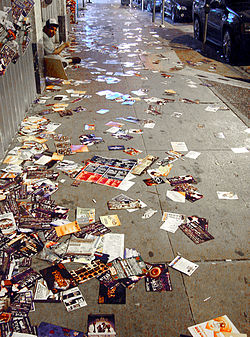
A flyer (or flier) is a form of paper advertisement intended for wide distribution and typically posted or distributed in a public place, handed out to individuals or sent through the mail. Today, flyers range from inexpensively photocopied leaflets to expensive, glossy, full-color circulars. Flyers in a digital format can be shared on the internet.




